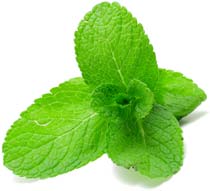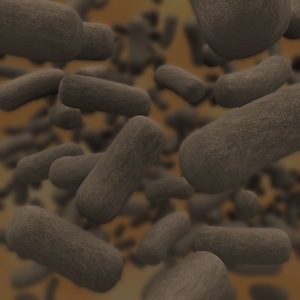| The 10 Best Stress Relieving Foods Posted: 26 Mar 2014 08:00 AM PDT Feeling stressed? Get some exercise! It’s one of nature’s most underutilized activities and perhaps one of the most effective and natural stress reducers. Studies consistently indicate that exercise is a helpful tool for alleviating stress and improving overall mood. [1] However, exercise is only one component of a healthy lifestyle. Your diet also plays an important role in how your body reacts to stress. While a general healthy diet devoid of processed foods is ideal for promoting good health, some foods are better than others in the way they combat stress. Here are the top 10 best stress-relieving foods that can easily be incorporated into any diet.
1. Dark Chocolate Commonly seen as a comfort food, chocolate’s sweet and bold flavors are enjoyed by millions of people every day. It turns out that science actually supports chocolate as a stress-relieving, mood-boosting food. Recent human studies have demonstrated that chocolate is a beneficial food that may be helpful for reducing the stress hormones cortisol and catecholamines. One study found that participants, who rated themselves as being highly stressed, experienced a significant drop in stress hormone levels following a two-week dark-chocolate eating period. The amount of dark chocolate consumed during this study was 1.4 ounces per day, or a little over half a pound per week. [2] Make sure you choose one that’s organic and extremely low in sugar! 2. Walnuts One of the physiological symptoms of stress is hypertension, or high blood pressure. [3] The abundance of alpha-Linolenic acid and linoleum acid in walnuts has shown some ability at promoting health blood pressure. [4] [5] A 2010 study also found polyunsaturated fatty acids, a type of fat found in walnuts, helpful for promoting normal circulation and cardiovascular response to acute stress. [6] 3. Salmon High in omega-3 fatty acids, salmon is often considered a brain food. There is also some research to suggest that salmon has the ability to reduce metabolic stress. One study found that omega-3 fatty acids, which are readily-available in salmon, reduced cortisol levels in men who were experiencing stress and anxiety. [7] Cortisol is a stress hormone that is increased in the body during times of psychological and physical stress. This hormone, when produced in excess, has been commonly associated with uncontrolled weight gain. Salmon also contains vitamin D, much more than other types of fish. Vitamin D3, which is often manufactured by the body in response to safe sunlight exposure, is important for a number of physiological mechanisms within the body, including managing mood and protecting against the effects of stress. [8] [9] During times of stress, the body’s stores of vitamin D typically fall, increasing the need for this valuable nutrient. [10] 4. Garlic Similar to salmon, garlic inhibits cortisol levels, thereby preventing unhealthy stress responses before they start. Sulfuric metabolites in garlic, such as allicin, have also been associated with healthy blood pressure, cholesterol, and cardiovascular protection. [11] 5. Figs Fresh or dried, figs offer a potent source of essential vitamins, minerals, and antioxidants. As a bioavailable source of potassium, calcium, and magnesium, figs offer nutrients necessary for maintaining healthy blood pressure and muscle function. The antioxidants in figs have the potential for protecting against oxidative stress, a type of stress that is facilitated by diet, pollution, and tobacco use. [12] 6. Oatmeal Natural rolled and steel cut oats provide a high-quality source of fiber, a non-digestible carbohydrate necessary for digestion and satiation. The complex carbohydrates found in oatmeal encourage healthy serotonin levels, which may help to improve mood. [13] 7. Pumpkin Seeds Pumpkin seeds, an autumn favorite, may provide stress-relieving benefits through their high levels of various nutrients, like omega-3 fatty acids, magnesium, zinc, and potassium. Pumpkin seeds also have a high phenolic content, and some research indicates that these phenols may promote antioxidant activity. These antioxidants have the potential to control glucose absorption and protect against oxidative stress and hypertension. [14] 8. Swiss Chard This dark-green leafy vegetable is packed with essential fat-soluble vitamins (A, C, E, and K) as well as minerals such as calcium, iron, magnesium, and potassium. Chard also contains a specific class of antioxidants known as betalains. These compounds have been found to protect the body against high blood sugar and high blood pressure, two conditions commonly associated with stress. [15] 9. Dulse Seaweed Similar to swiss chard, dulse seaweed offers a high-quality source of nutrients and antioxidants. In addition to essential vitamins and minerals, dulse also contains iodine. Necessary for thyroid health, iodine is required by the thyroid gland for the proper production and regulation of hormones. Considered to be a superfood, this purple sea vegetable may help fight the effects of stress by maintaining proper hormone levels within the body. 10. Citrus Fruits Aromatherapy has promoted citrus scents for centuries as a natural means to relax. Not only can the aroma of citrus fruits, like oranges and grapefruit, provide a relaxing effect, its natural vitamin C content may also provide additional benefit. One study evaluated the physiological impact of vitamin C in obese children suffering from mental stress. A specific concern of these patients was their blood pressure. Results showed that this high-risk group experienced a blood pressure reduction to levels much more consistent with lean children experiencing little to no stress. [16] How Do You Relieve Stress? Who would have thought such an array of different foods could offer so much? Using food to provide a complete spectrum of nutrition is a powerful way to protect your health, as natural foods are often used to support a healthy lifestyle. Which of these foods do you enjoy? Do you find that eating a healthy diet has helped you better deal with stress? Leave a comment below and let us know! -Dr. Edward F. Group III, DC, ND, DACBN, DCBCN, DABFM References: - Voss MW, Vivar C, Kramer AF, van Praag H. Bridging animal and human models of exercise-induced brain plasticity. Trends Cogn Sci. 2013 Sep 9. pii: S1364-6613(13)00166-6. doi: 10.1016/j.tics.2013.08.001.
- Francois-Pierre J. Martin, Serge Rezzi, Emma Pere-Trepat, Beate Kamlage, Sebastiano Collino, Edgar Leibold, Jirgen Kastler, Dietrich Rein, Laurent B. Fay, and Sunil Kochhar. Metabolic Effects of Dark Chocolate Consumption on Energy, Gut Microbiota, and Stress-Related Metabolism in Free-Living Subjects. Journal of Proteome Research, 2009, 8 (12), pp 5568-5579. doi: 10.1021/pr900607v. October 7, 2009.
- Marshall IJ, Wolfe CD, McKevitt C. Lay perspectives on hypertension and drug adherence: systematic review of qualitative research. BMJ. 2012 Jul 9;345:e3953. doi: 10.1136/bmj.e3953.
- Takeuchi H, Sakurai C, Noda R, Sekine S, Murano Y, Wanaka K, Kasai M, Watanabe S, Aoyama T, Kondo K. Antihypertensive effect and safety of dietary alpha-linolenic acid in subjects with high-normal blood pressure and mild hypertension. Journal of Oleo Science. 2007;56(7):347-60.
- Miura K, Stamler J, Nakagawa H, Elliot P, Ueshima H, Chan Q, Brown IJ, Tzoulaki I, Saitoh S, Dyer AR, Daviglus ML, Kesteloot H, Okayama A, Curb JD, Rodriguez BL, Elmer PJ, Steffen LM, Robertson C, Zhao L. Relationship of dietary linoleic acid to blood pressure. Hypertension. 2008 August;52(2):408-14. doi: 10.1161/HYPERTENSIONAHA.108112383
- West SG, Krick AL, Klein LC, Zhao G, Wojtowicz TF, McGuiness M, Bagshaw DM, Wagner P, Ceballos RM, Holub BJ, Kris-Etherton PM. Effects of diets high in walnuts and flax oil on hemodynamic responses to stress and vascular endothelial function. J Am Coll Nutr. 2010 Dec;29(6):595-603.
- Barbadoro P, Annino I, Ponzio E, Romanelli RM, D’Errico MM, Prospero E, Minelli A. Fish oil supplementation reduces cortisol basal levels and perceived stress: a randomized, placebo-controlled trial in abstinent alcoholics. Mol Nutr Food Res. 2013 Jun;57(6):1110-4. doi: 10.1002/mnfr.201200676. Epub 2013 Feb 6.
- Shaffer JA, Edmondson D, Wasson LT, Falzon L, Homma K, Ezeokoli N, Li P, Davidson KW. Vitamin D Supplementation for Depressive Symptoms: A Systematic Review and Meta-Analysis of Randomized Controlled Trials. Psychosomatic Medicine. 2014 March 14.
- Kuhne H, Schutkowski A, Weinholz S, Cordes C, Schierhorn A, Schulz K, Konig B, Stangl GI. Vitamin D receptor regulates intestinal proteins involved in cell proliferation, migration and stress response. Lipids in Health and Disease. 2014 March 19;13(1):51
- Quraishi SA, Camargo CA Jr. Vitamin D in acute stress and critical illness. Curr Opin Clin Nutr Metab Care. 2012 Nov;15(6):625-34. doi: 10.1097/MCO.0b013e328358fc2b.
- Butt MS, Sultan MT, Butt MS, Iqbal J. Garlic: nature’s protection against physiological threats. Crit Rev Food Sci Nutr. 2009 Jun;49(6):538-51. doi 11.1080/10408390802145344.
- Vinson JA, Zubik L, Bose P, Samman N, Proch J. Dried fruits: excellent in vitro and in vivo antioxidants. J Am Coll Nutr. 2005 Feb;24(1):44-50.
- P M Lyons and A S Truswell. Serotonin precursor influenced by type of carbohydrate meal in healthy adults. The American Journal of Clinical Nutrition.
- Kwon YI, Apostolidis E, Kim YC, Shetty K. Health benefits of traditional corn, beans, and pumpkin: in vitro studies for hyperglycemia and hypertension management. J Med Food. 2007 Jun;10(2):266-75.
- Ninfali P, Angelino D. Nutritional and functional potential of Beta vulgaris cicla and rubra. Fitoterapia. 2013 Sep;89:188-99. doi: 10.1016/j.fitote.2013.06.004. Epub 2013 Jun 7.
- Fernandes PR, Lira FA, Borba VV, Costa MJ, Trombeta IC, Santos Mdo S, Santos Ada C. Vitamin C restores blood pressure and vasodilator response during mental stress in obese children. Arq Bras Cardiol. 2011 Jun;96(6):490-7. Epub 2011 May 6.
The post The 10 Best Stress Relieving Foods appeared first on Natural Health & Organic Living Blog.  |














